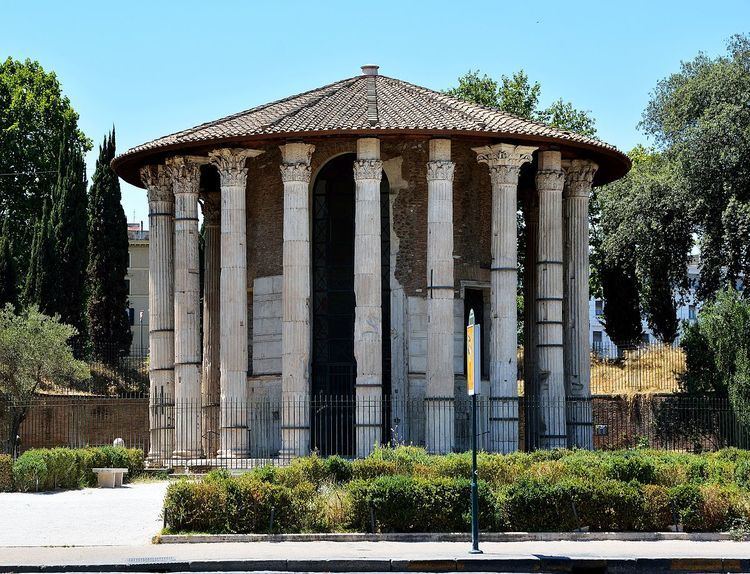Phone +39 06 3996 7700 | ||
 | ||
Similar Forum Boarium, Temple of Portunus, Temple of Vesta, Santa Maria in Cosmedin, Temple of Castor and Pollux | ||
Temple of hercules victor in the forum boarium tempio di ercole vincitore manortiz
The Temple of Hercules Victor ('Hercules the Winner') (Italian: Tempio di Ercole Vincitore) or Hercules Olivarius is a Roman temple in Piazza Bocca della Verità, in the area of the Forum Boarium close to the Tiber in Rome. It is a monopteros, a round temple of Greek 'peripteral' design completely encircled by a colonnade. This layout caused it to be mistaken for a temple of Vesta until it was correctly identified by Napoleon's Prefect of Rome, Camille de Tournon. Despite (or perhaps due to) the Forum Boarium's role as the cattle-market for ancient Rome, the Temple of Hercules is the subject of a folk belief claiming that neither flies nor dogs will enter the holy place.
Contents
- Temple of hercules victor in the forum boarium tempio di ercole vincitore manortiz
- Digital postcard rome bocca della verita temple of hercules victor
- Description
- Identification
- Post Classical history
- References
Digital postcard rome bocca della verita temple of hercules victor
Description
Dating from the later 2nd century BC, and perhaps erected by L. Mummius Achaicus, conqueror of the Achaeans and destroyer of Corinth, the temple is 14.8 m in diameter and consists of a circular cella within a concentric ring of twenty Corinthian columns 10.66 m tall, resting on a tuff foundation. These elements supported an architrave and roof, which have disappeared. The original wall of the cella, built of travertine and marble blocks, and nineteen of the originally twenty columns remain but the current tile roof was added later. Palladio's published reconstruction suggested a dome, though this was apparently erroneous. The temple is the earliest surviving marble building in Rome.
Identification
Its major literary sources are two almost identical passages, one in Servius' commentary on the Aeneid (viii.363) and the other in Macrobius' Saturnalia. Though Servius mentions that aedes duae sunt, "there are two sacred temples", the earliest Roman calendars mention but one festival, on 13 August, to Hercules Victor and Hercules Invictus interchangeably.
Post-Classical history
By 1132 the temple had been converted to a church, known as Santo Stefano alle Carozze (St. Stephen 'of the carriages'). Additional restorations (and a fresco over the altar) were made in 1475. A plaque in the floor was dedicated by Sixtus IV. In the 17th century the church was rededicated to Santa Maria del Sole ("St. Mary of the Sun").
The temple and the Temple of Vesta in Tivoli were an inspiration for Bramante's Tempietto and other High Renaissance churches of centralized plan.
The temple was recognized officially as an ancient monument in 1935 and restored in 1996.
